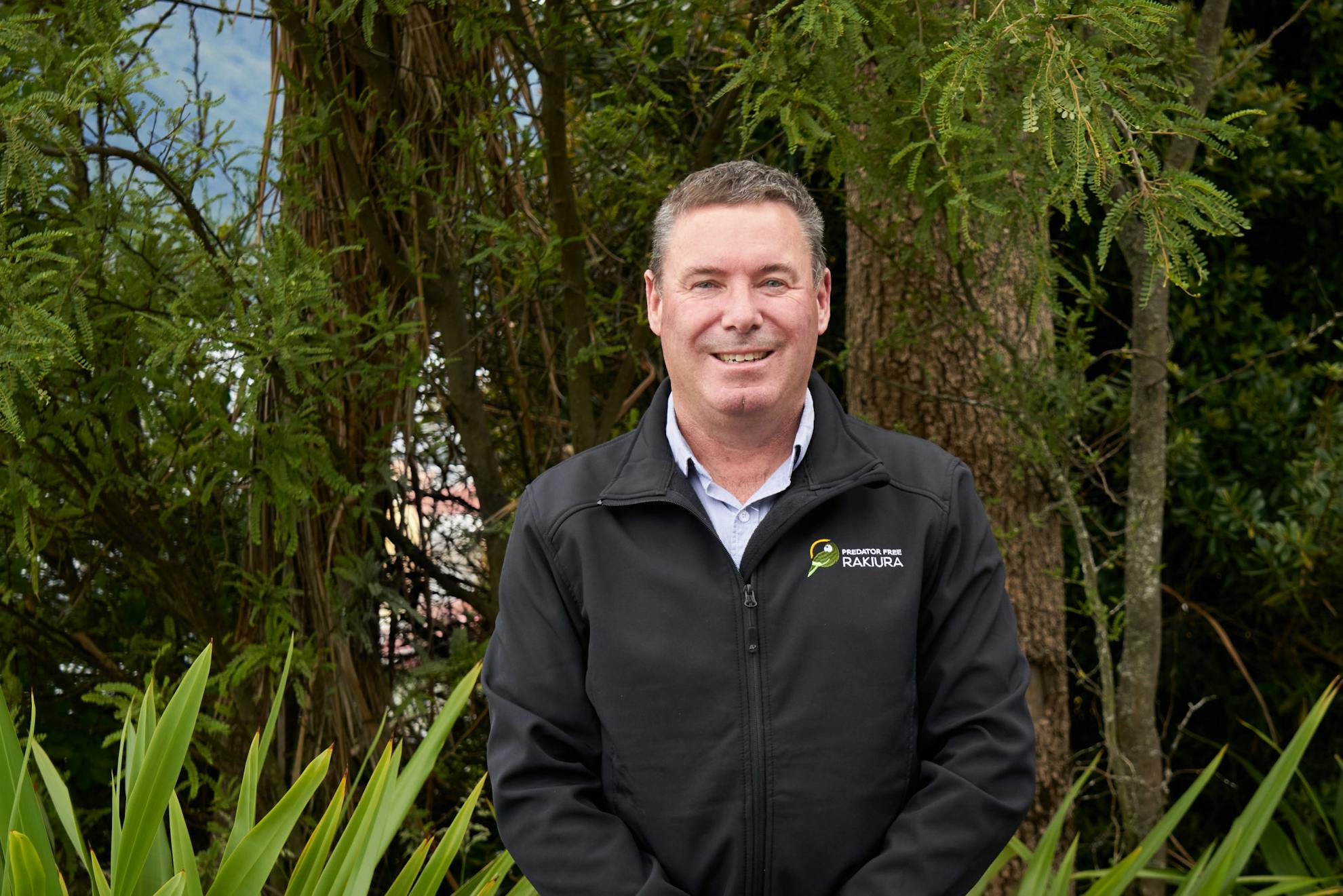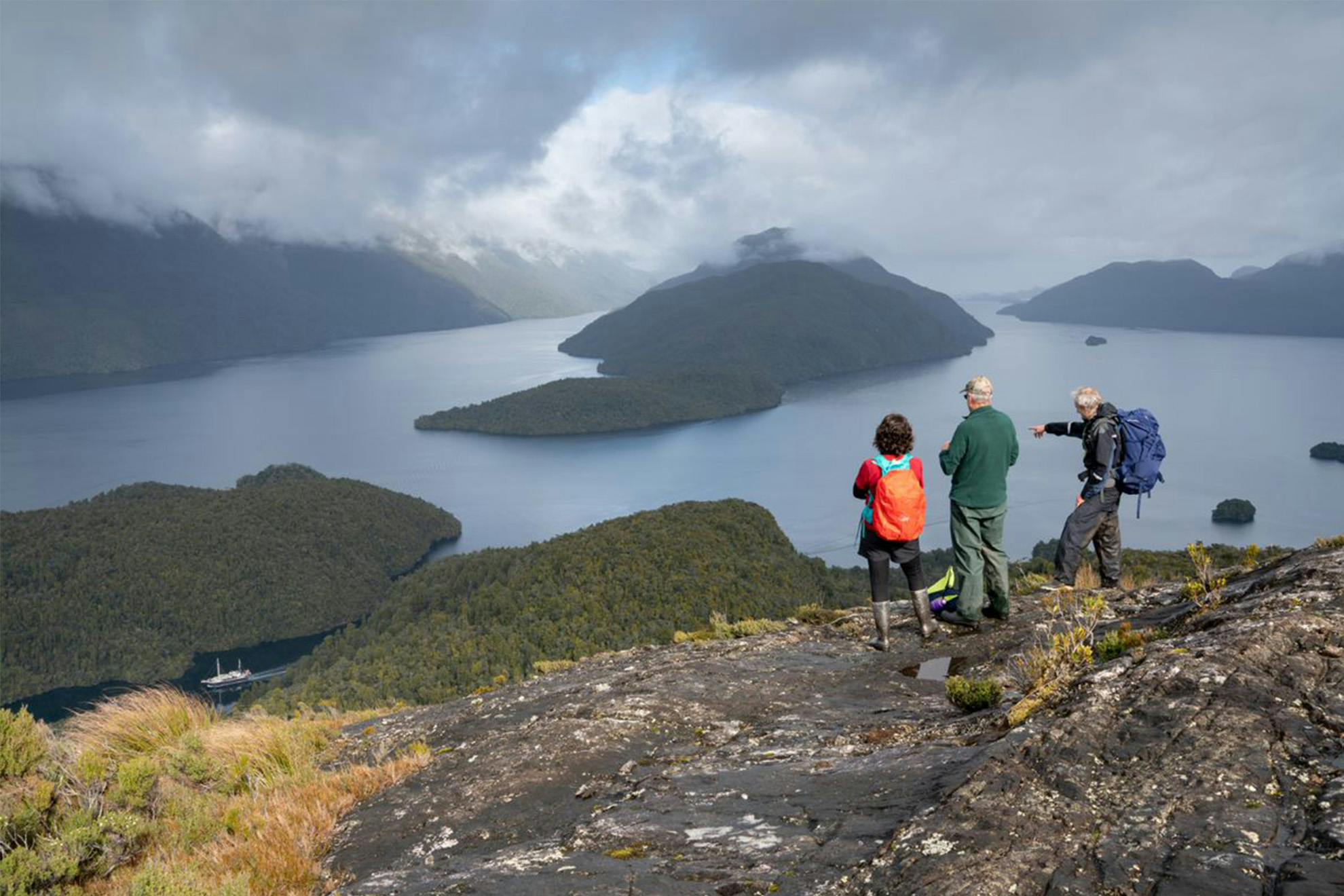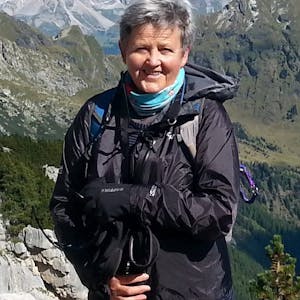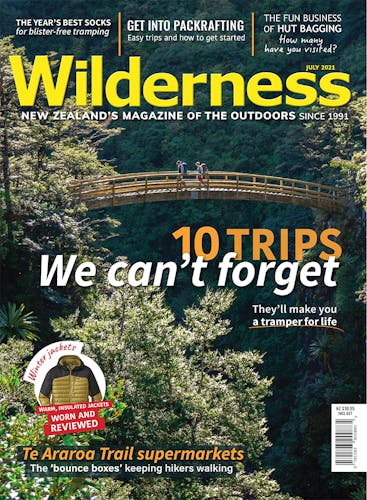A future where Rakiura is predator-free and kākāpō boom in southern Fiordland is not just a pipe dream, it’s the vision that drives Te Anau’s Paul Norris.
When Richard Henry, New Zealand’s ‘grandfather of conservation’, was in Tamatea/Dusky Sound in 1894, he said the sound of kākāpō booming was like distant thunder. In four years, with a small dinghy and the help of his sniffer dog, Henry moved 572 kiwi and kākāpō from rat and stoat-infested forests to Resolution Island, believed to be predator-free. Tragically, it wasn’t.
More than a hundred years on, the battle for the birds has been reignited. But while resources now are greater than one man, his dinghy and dog, the challenge remains huge.
The Tamatea/Dusky Sound restoration partnership encompasses DOC and Fiordland community, tourism and business groups. It aims to eradicate pests from around the southern fiord, re-introduce ‘missing’ species and create a ‘bio-bank’ of species for relocation to pest-free locations.
Paul Norris is heavily involved. He moved to Fiordland 28 years ago for a summer tourism job and loved the place so much he’s still there, putting back into conservation wherever he can. His work is well recognised and this year he was awarded an MNZM for his services to conservation. Norris is now general manager of Real Journeys, where conservation has always been a strong company ethic. In a restoration area covering more than 700 islands, Real Journeys has been able to sponsor eradication work on one of the largest, Cooper Island (1779ha). With the help of the Leslie Hutchins Conservation Foundation, an initial $500,000 was raised to get started.
“We had to establish that the island was suitable for retaining bird populations, then build tracks for the trapping contractors,” Norris says. “Now we have an intensive network of traps all over the island, targeting stoats and rats, plus we have traps on the facing mainland area because these predators can swim.”
It costs $75,000 each year for this ongoing eradication work and to help raise this, Norris has brought his passengers ‘on board’.

“We run multi-day discovery expeditions and put $100 from every fare towards the Cooper Island restoration,” he says. “We also ‘sell’ traps to our customers and send them catch reports. It’s a way of keeping them engaged in conservation work.”
Norris also instigated multi-day conservation expeditions led by DOC staff and experts, which donate $500 per passenger for the Cooper Island project.
“We carry several hundred passengers each year so essentially they are funding the island’s restoration,” he says.
The trapping has gone well. “What we thought we would achieve in seven years we have achieved in four,” says Norris. “Stoats have been reduced to such low numbers, vulnerable species like tawaki, kea, and kākā can now flourish.”
In the latest monitoring trip, in February, for the first time since trapping began no rats were caught. However, cameras on the island still detect some rats and stoats, and Norris says continued effort is needed to make the island a safe home for threatened species.
“Our vision is to have kākāpō returned,” he says.
Lindsay Wilson, former DOC principal biodiversity ranger who led the establishment of the Tamatea/Dusky Sound project, says Norris has lifted Real Journeys’ already strong conservation ethos to a new level.
“I worked with Paul on the Cooper Island project. It was an ambitious partnership and expensive to establish, however, he not only lobbied hard and secured the required funding, but also future-proofed the project by establishing ongoing funding streams.
“This was a revelation to me because it is always difficult to secure funding for ongoing projects. He is smart, passionate about conservation; an action man who gets things done and is well-deserving of his MNZM honour.”
Cruise for a Cause is another venture inspired by Norris. Each year before taking on paying passengers, staff training cruises are undertaken which community groups and charities can apply to use for fundraising.
“We provide the venue, food and staff and the groups can do what they like; sell tickets, invite selected people, hold a silent auction,” Norris says. “One group brought the Dance Exponents on board.”
Since 2016, Cruise for a Cause has raised over $260,000 for groups such as the Fiordland Trails Trust, Wanaka LSAR, Yellow-Eyed Penguin Trust and the Dunedin Wildlife Hospital.
Norris has also set his conservation sights beyond Fiordland. Last year, DOC announced a multi-million dollar grant for a feasibility study into ridding Stewart Island of all predator pests. As chair of Rakiura Predator Free, Norris sits in the hot seat.
“Rakiura is New Zealand’s biggest predator-free project; the difference here is you are dealing with multiple landowners, so you need a lot of conversations.”
After some early scepticism, he feels the pendulum has swung in favour and he gets excited talking about it.
“Look at the success of Kapiti, then Secretary Island,” he says. “The islands are getting bigger. If we can achieve predator-free status for Rakiura, what we learn can be taken towards Predator Free NZ 2050.”
And, just maybe, those booming kākāpō really will once again sound like distant thunder.
Conservation partnerships a Fiordland feature
Backing from community and business groups can make a massive difference to what DOC is able to achieve, says Lindsay Wilson, general manager of the Hollyford Conservation Trust.
“These partnerships bring a whole new energy, suite of skills, a can-do attitude and a healthy impatience to get things done,” he says.
Wilson cites the Tamatea/Dusky Sound Restoration as a prime example, where multiple organisations – Real Journeys, Fiordland Conservation Trust, Peregrine Wines, Pure Salt charters and the Fiordland Lobster Company – provide support.
Indian Island/Mamaku was pest-free but re-invaded by rats in 2015. Following hundreds of volunteer hours from Pure Salt’s owners, crew, family, clients and supporters, rat numbers are now being held below the threshold considered safe for translocations. The company has since taken on a bigger challenge: the establishment of a trapping network on neighbouring 2000ha Long Island.
The Fiordland Lobster Company partnered with DOC to eradicate stoats from 73ha Pigeon Island and has since funded the introduction of mohua, kakaruai (South Island robin) and tīeke to the island. The company sponsors a trapping network to guard against predator reinvasions.
“Working with such inspiring partners, and seeing conservation becoming a mainstream activity with broad support, has been the highlight of my career in conservation,” says Wilson.








